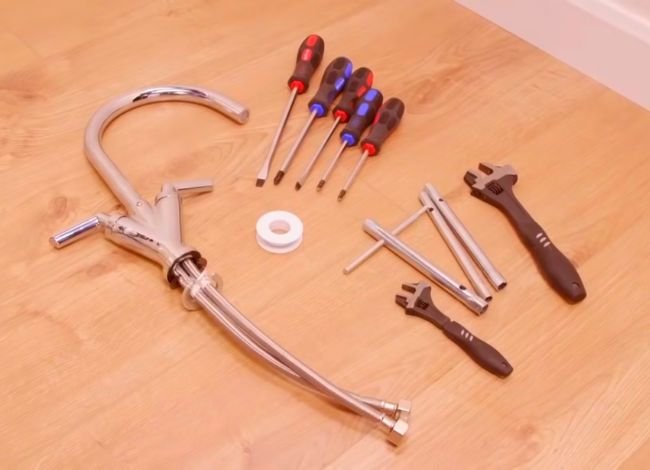Last Updated on December 16, 2023
When selecting a kitchen sink tap, it’s important to measure the size and configuration of your sink and consult the manufacturer’s installation instructions to ensure that the tap you choose will fit properly.
Related: How do you tighten the kitchen faucet nut under the sink?
Do all kitchen taps fit all sinks?
No, kitchen taps do not fit all sinks. There are different types of kitchen taps and sink mounting configurations, and they are not necessarily compatible with each other.
The size of a kitchen sink tap will depend on the size of the sink and the type of tap you choose. Several different types of kitchen taps are available, including single-hole, double-hole, and bridge-style taps. The size of the tap should be compatible with the size and configuration of the sink.
Single-hole taps are designed to be installed in sinks with a single pre-drilled hole. These taps are usually smaller in size and take up less space on the sink.
Double-hole taps are designed to be installed in sinks with two pre-drilled holes. These taps are larger than single-hole taps and may take up more space on the sink.
Bridge-style taps are designed to be installed in sinks with three pre-drilled holes. These taps have separate spouts and handles that are connected by a bridge. Bridge-style taps are usually larger in size and take up more space on the sink.
Factors to consider when selecting a kitchen tap
- Hole configuration
Most sinks have pre-drilled holes for installing a kitchen tap. These holes may be located in the sink’s center or on the sink’s side. Ensure that the tap you choose is designed to be installed in the hole configuration of your sink.
- Mounting type
There are several different types of mounting configurations for kitchen taps, including deck-mounted, wall-mounted, and under-mounted. Ensure that the tap you choose is designed to be mounted how your sink is configured.
- Size and shape
The size and shape of the tap should be compatible with the size and shape of your sink. If the tap is too large or too small for the sink, it may not fit properly or may not look aesthetically pleasing.
How do you fit the tap with the kitchen sink?
Here are the general steps for fitting a tap with a kitchen sink:
- Before you start working on the tap, make sure to shut off the water supply to the sink. This will prevent any accidental water spills or leaks.
- If your tap has a mounting plate, attach it to the sink using the mounting hardware that came with the tap. The mounting plate will provide a stable base for the tap to sit on.
- Connect the hot and cold water supply lines to the corresponding inlets on the tap. The water supply lines should be tightened securely to prevent any leaks.
- Place the tap onto the mounting plate or into the pre-drilled holes on the sink. Secure the tap to the sink using the mounting hardware that came with the tap.
- If your tap has a built-in drain, attach it to the sink’s drain pipe. Make sure the drain is tightened securely to prevent any leaks.
- Once you have finished installing the tap, turn the water supply back on and test it to ensure it is functioning properly.
Do you need a plumber to change the kitchen sink taps?
In most cases, hiring a professional plumber to change a kitchen tap is unnecessary. However, having a basic understanding of plumbing and being comfortable working with water and gas lines is important. Suppose you are not comfortable with the installation process or have doubts about your ability to complete the job safely. In that case, hiring a professional plumber to do the work is always a good idea. But how much do plumbers charge to change a tap? In general, plumbers charge an hourly rate for their services, which can range from $50 to $100 per hour.
The cost of the tap itself will also need to be taken into account. Simple single-hole taps can cost as little as $50, while more elaborate double-hole or bridge-style taps can cost several hundred dollars.
Overall, the cost of hiring a plumber to change a tap can range from $100 to $300 or more, depending on the abovementioned factors.




